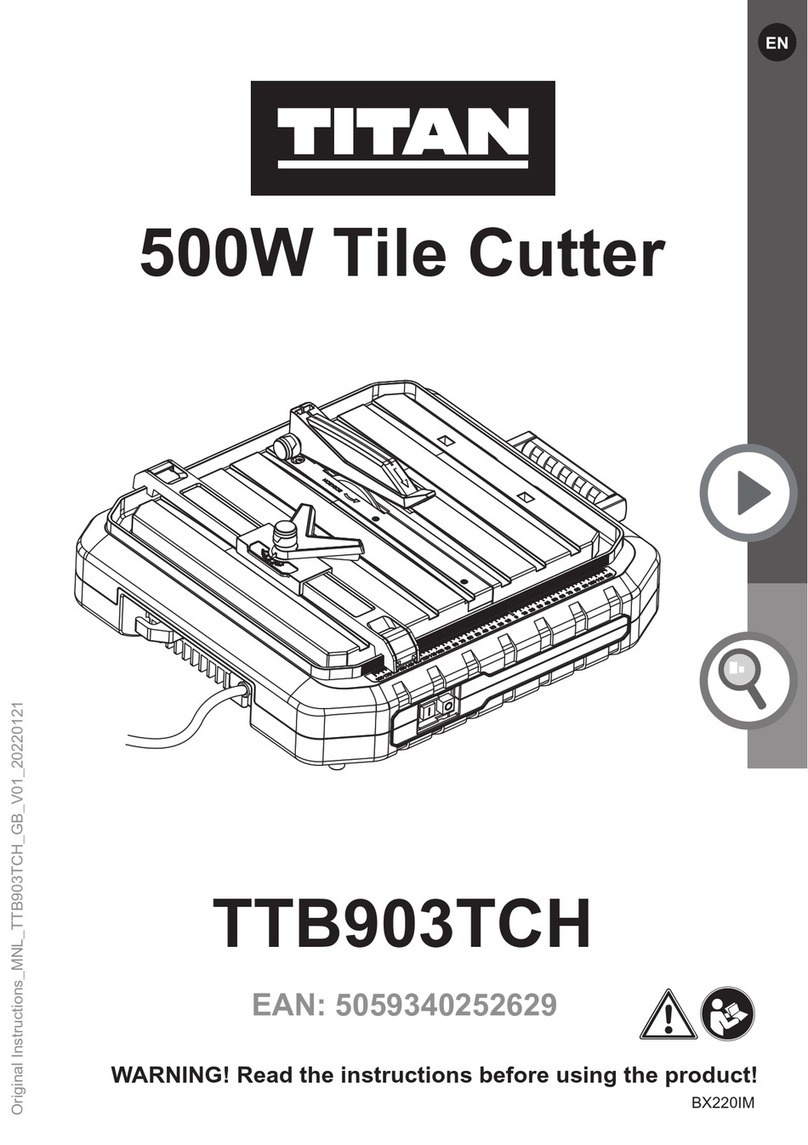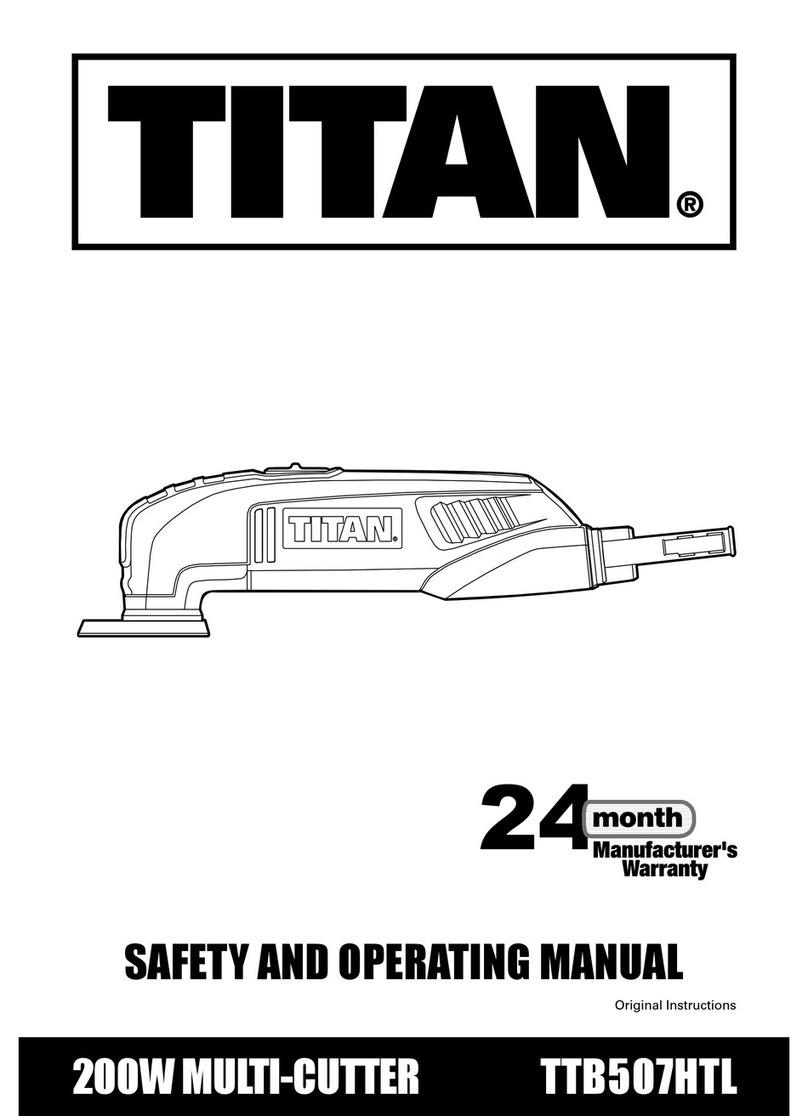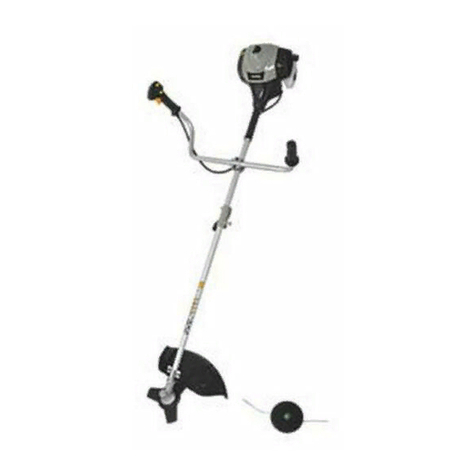
5
TTBCP33-4
Getting Started . . .
4.
Keep handles dry, clean and free from oil and grease. Greasy, oily handles are
slippery and may cause loss of control.
5.
or medication.
6.
When the machine is switched off, make sure the cutting attachment has stopped
before setting down the machine.
7.
fumes can collect.
8.
9.
Avoid operating the machine in wet grass or take additional precautions to avoid
slipping.
10.
Do not operate the machine when crossing surfaces other than grass, and when
transporting the machine to and from the working area.
11.
extending the cutter line always return the machine to its normal operating position
before switching on.
12. Make sure that the ventilation openings are kept clear of debris.
13. Make sure that the air intake of the combustion engine is clear. Keep the air intake
free of dust, dirt particles, gases and fumes.
14.
If the cutting attachment does not stop when the engine idles, stop using the machine
and contact with the customer services.
15.
16.
Check for signs of wear or damage before each use, after any impact or if the machine
has been dropped. Repair the machine if necessary.
17. Stop the engine, disconnect the spark plug connector:
• before clearing blockages;
• before cleaning or working on the machine;
• after striking a foreign object. Inspect the machine for damage and make repairs
before restarting and operating the machine;
• if the machine starts to vibrate abnormally (check immediately);
• whenever you leave the machine;
• before refuelling.
Maintenance
1.
Keep all nuts, bolts and screws tight to be sure the machine is in a safe working
condition.
2.
Disconnect the spark plug connector before performing maintenance, except for
carburetor adjustments.
3.
Keep the engine and petrol storage area free of grass, thatch, moss, leaves or
4. Examine the machine regularly and replace worn or damaged parts for safety.
5. Do not operate the machine with a damaged or excessively worn cutting device.
6.
Safety information


































